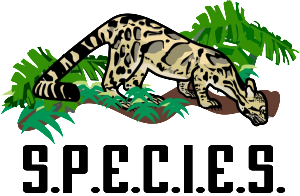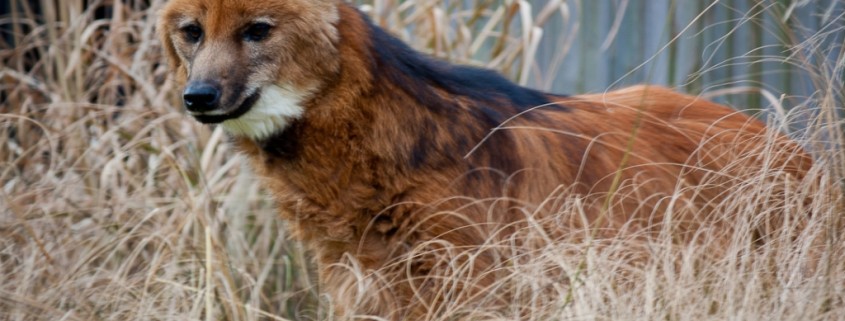The Maned Wolf
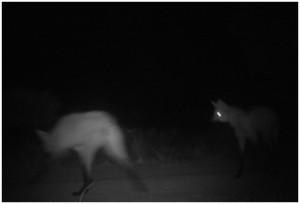
A pair of maned wolves on a private ranch in the low humid Chaco of Paraguay. Less than 30 kilometers from Asuncion, this site was one of the most promising for maned wolves that S.P.E.C.I.E.S. investigated in the country
The maned wolf (Chrysocyon brachyurus) is the largest canid of South America. Standing approximately 35 inches tall with relatively large ears and a slender build (about 50 pounds), the maned wolf is not a wolf at all, but a distinct evolutionary lineage of canids unique to South America.
More like a tall, strikingly reddish fox, its closest relative is the Falkland Islands Wolf (Dusicyon australis), a canid that was recently hunted into extinction for its fur. Perfectly adapted to the Cerrado and Humid Chaco mixed grassland, shrub, and savanna regions it inhabits across Brazil, Bolivia, Paraguay, and Argentina, the maned wolf uses its exceptional hearing to locate the small mammals it preys on in the thick grasses they use for cover.s one of the most promising for maned wolves that S.P.E.C.I.E.S. investigated in the country.
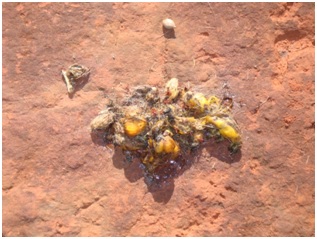
Scat of the maned wolf showing the pits the “Lobeira” or “wolf” apple (Solanum lycocarpum), a staple in the maned wolf’s diet across much of its range in the Cerrado, Chaco, and Atlantic Forest habitat
Although capable of occasionally taking larger prey like brocket deer, the maned wolf is as much a rodent specialist as it is a forager of locally abundant fruits, particularly the appropriately named wolf apple or lobeira, a plant commonly found in the scat of the species across much of its range. Unlike other species of canid its size, maned wolves are generally solitary, nocturnal, or crepuscular hunters, occasionally venturing forth when the skies are overcast and rainy. Whereas monogamous pairs may defend large territories, they may rarely do so together and generally associate only during mating, or when there are two to six pups to rear.
Currently classified as “Near Threatened” by the IUCN, some maned wolf populations are declining, while others may be regionally expanding. This is because while agricultural transformation of formerly forested lands may be creating marginal to suitable habitat for the species in some areas, in others, intensive agricultural land uses, urbanization, fragmentation, and competition and diseases from domestic dogs, may present a serious threat to the canid. Given its unique evolutionary heritage, a better understanding of these relationships should be considered a priority for conservation planning efforts. In Paraguay, S.P.E.C.I.E.S. is beginning to investigate these processes, pioneering the first such project for the canid in the country’s Humid Chaco ecoregion.
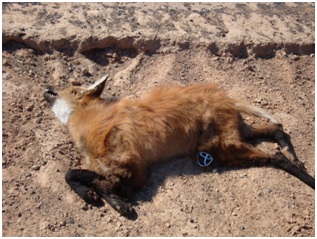
Maned wolf that was killed on the Gran Chaco Highway in Paraguay. As elsewhere like Brazil, vehicles may be a major source of mortality for the species in the region.
